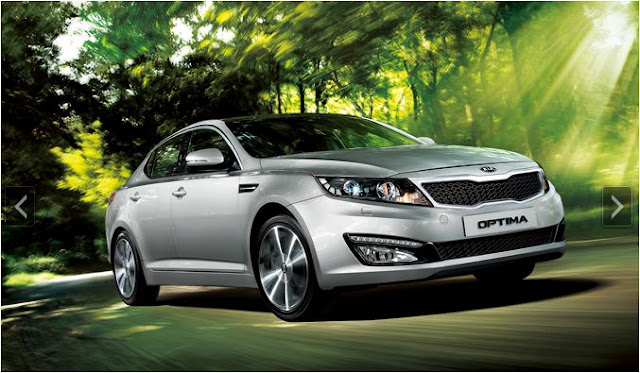All-new Optima, the ambitious model by Kia, is finally over! In addition to its charismatic and sleek allure, Optima boasts quality performance and diverse high-technology features. Let’s find out more about the Theta II 2.4 GDi gasoline engine that forms the powerful core of the vehicle.
The Theta II 2.4 GDi engine was developed to answer the universal demand for cars with enhanced fuel efficiency in light of high oil prices and, at the same time, provide a high performance engine that offers a ‘fun to drive’ experience. The engine was designed to secure a stronger position in the mid-sized sedan market.
The engine boasts driving performance with a maximum horsepower of 201 and maximum torque of 25.5kg•m.
The gasoline direct injection (GDI) combustion system directly sprays fuel into the combustion chamber at a high 150 bar injection pressure. The injector and fuel pump are designed as a high pressure structure to directly inject gasoline into the cylinder and achieve greater precision. Additionally, it is able to enhance performance and fuel economy by improving the intake efficiency, reducing knocking, and increasing the compression ratio. In particular, the use of a split-injection method allows the catalyst to reach operating temperature (LOT) faster.
The GDI combustion system also offers environment-friendlier benefits: fuel efficiency is enhanced by 2-3% and engine performance by more than 10%, while the time required for the catalyst to reach operating temperature is reduced by 50-60%.
The Theta II 2.4 GDI engine was developed through the optimal GDI method to deliver improved fuel economy and performance along with reduced emissions. It is a high performance, low polluting and fuel efficient engine.
Furthermore, the application of a variable intake & exhaust valve system and a variable intake system (VIS) maximizes intake efficiency and improves driving performance and fuel economy. The variable intake & exhaust valve system adjusts the timing of the intake and exhaust valves depending on the engine RPM. VIS adjusts the intake manifold and increases output based on the engine RPM and load.
The high pressure fuel system features an integrated injector driver called Powertrain Control Unit (PCU). It was developed to assess and control the right amount of fuel injection by integrating ECU functions.
Other additions include the roller-type timing chain and piston cooling jet that cools the piston by spraying engine oil for greater wear resistance; the application of low-friction coating technology to the valve tappet, piston ring and skirt to improve fuel economy; the use of plastic material for key parts like the head cover and intake manifold for increased recyclability and reduced weight.
In particular, the piston cooling jet is attached to the main oil gallery on the cylinder block to spray engine oil. This cools the overheated piston during the high temperature/ high RPM operations to reduce knocking. Furthermore, it quickly raises the temperature of the engine oil during cold starts to minimize friction loss and improve fuel efficiency.




















